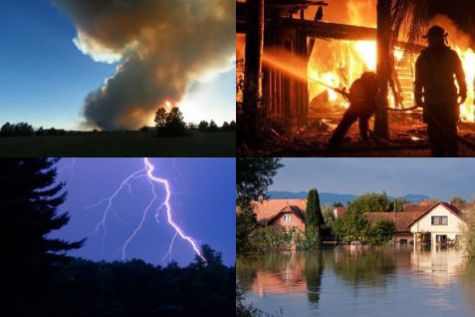Search All Denver Homes
 We Give You The Easiest Ways To Search Denver Homes And Find The Perfect Home!
We Give You The Easiest Ways To Search Denver Homes And Find The Perfect Home!
Homeowners Insurance Reform Act
(For Colorado - 2013)
 Reading anything about insurance is usually pretty boring, but hang-in-there for just a few minutes now that you've gotten this far.
Reading anything about insurance is usually pretty boring, but hang-in-there for just a few minutes now that you've gotten this far.
We've had some pretty strange weather patterns all-round Colorado for several years. From floods, tornadoes, hail storms, and extreme wildfires. All of the severe weather-related acts have caused massive losses over the previous ten years in Colorado.
Colorado ranks among the top ten states in the country with catastrophe-related insurance claims. And as a result of those disasters, your insurance policy is changing!
You may have recently received a "notice" in the mailbox about your homeowners insurance that spells out changes to your Colorado insurance policy. Like me, you may also have 'set aside' that notice, or filed it away without carefully reading it.
Most things from an insurance company are hard to digest with all that tiny print and legal mumbo-jumbo. No worries though. In plain English, I'll give you the following summary of what that letter said.
Here are 11 of the most important changes to your insurance coverage as mandated by the new Colorado law. It is called the Homeowners Insurance Reform Act of 2013.
Highlights of the Act have are as follows:
Some important responsibilities of homeowners, too: a) Homeowners (policy holders) are ultimately responsible for selecting the amount of coverage they desire. b) Homeowners must assess all improvements to the home as they are made, and notify the insurer of those improvements; c) Homeowners should update the inventory or contents regularly, and store the proof of inventory off-site.
Because many homeowners are actually unaware of what their homeowner's insurance covers, they often choose not to get extra coverage to protect their homes these natural disasters. It's important to know what your policy covers, and to follow-up with your insurance company once every couple years to evaluate those coverages and protections. Note: The average cost for adding flood coverage to a homeowner’s policy is about $650 a year.
Much of the content for this article was provided courtesy of Land Title. For another take on the this topic, read more here.
Attributions: sxc.hu
by Michael Dagner: Google+

Michael Dagner is a real estate professional in Denver, Colorado.
The Michael Dagner Group, Brokers Guild Cherry Creek Ltd, 7995 E. Hampden Ave, Ste 100, Denver, CO 80231 Map
5 Minutes From The Denver Tech Center - Near Tamarac Square, 9-Mile Station, & Cherry Creek Reservoir
(303) 514-4000
Copyright © 2010-2011, the Michael Dagner Group. All rights reserved. Sitemap | Terms Of Use | Our Commitment To Your Privacy